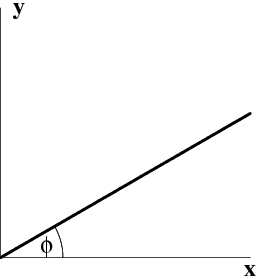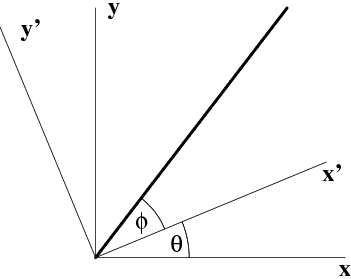- §1. Distance
- §2. Trigonometry
- §3. Triangle Trig
- §4. Rotations
- §5. Projections
- §6. Addition Formulas
Addition Formulas
Consider the line through the origin which makes an angle $\phi$ with the (positive) $x$-axis, as shown in the first sketch in Figure 3.7. What is its slope? The equation of the line is \begin{equation} y = x \,\tan\phi \end{equation} so that the slope is $\tan\phi$, at least in “unprimed” coordinates. Consider now the line through the origin shown in the second sketch, which makes an angle $\phi$ with the (positive) $x'$-axis. What is its slope? In “primed” coordinates, the equation of the line is just \begin{equation} y' = x' \,\tan\phi \end{equation} so that, in these coordinates, the slope is again $\tan\phi$. But what about in “unprimed” coordinates? The $x'$ axis itself makes an angle $\theta$ with the $x$-axis. It is tempting to simply add these slopes, obtaining $\tan\phi+\tan\theta$, but this not correct. Slopes don't add; angles do! The correct answer is that \begin{equation} y = x \,\tan(\theta+\phi) \end{equation} so that the slope is given by (3) of §3.2.
Remember this discussion when we discuss the Einstein addition law.

